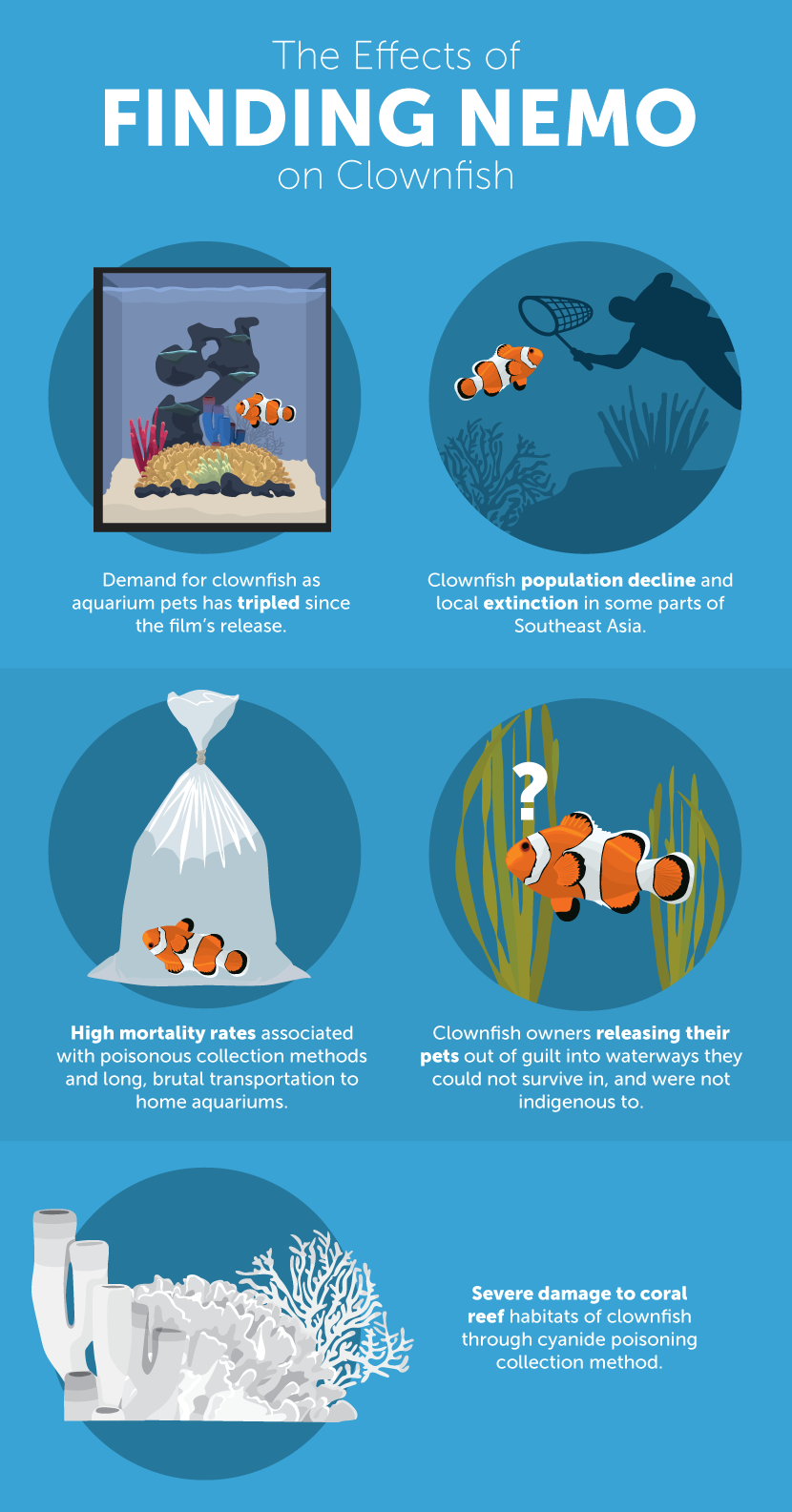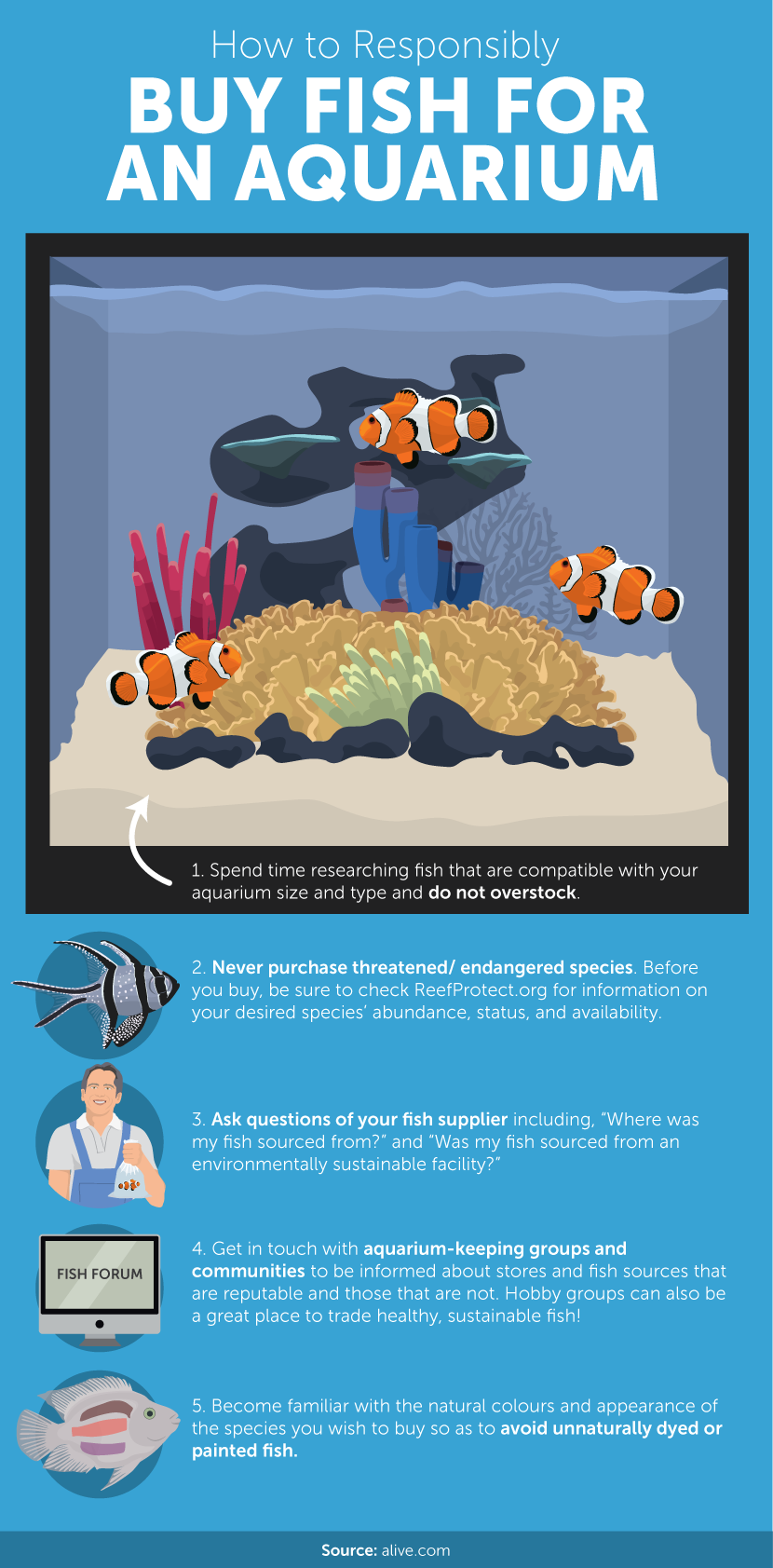Losing Nemo and Dory
How Finding Nemo Almost Doomed the Clownfish – And How Finding Dory Could Decimate the Regal Blue Tang Population, Too
Unless you were living under a reef in 2003, you probably watched the Disney Pixar box-office smash Finding Nemo at least three times. The film tells the tale of a clownfish named Marlin and his regal blue tang friend Dory as they travel all the way to Sydney Harbour to rescue Marlin’s son, Nemo, who had been stolen from his coral reef home to live out his numbered days in the care of a dentist’s deranged niece. It’s a touching, funny, and inspiring tale that taught a generation many life lessons. “Just keep swimming” was the new “Hakuna matata.” The film also taught us a lot about the beauty of the ocean and its coral reefs, and some of their most famous and attractive inhabitants. We all certainly fell in love with the clownfish and blue regal tang – two glamorous species in the wild, and lovable characters in the film.

Clownfish Repercussions
Despite the message of the film being largely centered on conservation and the tragedy of taking wild coral fish species from their homes and placing them in glass prisons, Finding Nemo had a sad and ironic effect that spread far beyond the box office. It seemed the clownfish portrayed in the film were too cute for their own good, and became instantly in-demand pets for people who failed to recognize that their demand for a cute pet would cause many more Nemos to be taken from their coral reef ecosystems. National Geographic estimates that the demand for clownfish as aquarium pets more than tripled as a direct result of the film. A conservation fund established to protect clownfish, SavingNemo.org, states that more than one million clownfish are now harvested from coral reef systems each year to go to aquariums, with 400,000 of these fish being sent to the United States. Localized extinction is occurring in some areas; frequently harvested coral reefs have seen clownfish populations decline by a large amount.
According to Karen Burke da Silva, associate professor in biodiversity and conservation at Flinders University in South Australia, the U.S. is “the biggest country in the world that purchases these tropical fish.” https://www.washingtonpost.com/news/morning-mix/wp/2016/05/18/finding-nemo-wasnt-so-entertaining-for-real-clownfish-now-conservationists-worry-about-finding-dory/ She recently told Fix.com,“What I do know for certain is that there are now areas in Southeast Asia where clownfish populations have gone locally extinct.”
Marine fish harvesting techniques can be indiscriminate, cruel, and involve high mortality rates. Often, cyanide poisoning is used on reefs to harvest fish; the poison acts as an anesthetic that allows fish to be collected faster and easier. http://www.abc.net.au/news/2016-05-17/why-it-might-be-harmful-to-take-your-own-nemo-or-dory-home/7423120 Da Silva told ABC News Australia the process of collection and exporting of marine fishes greatly affects mortality rates. She said she has observed statistics that indicate up to 90 percent of fish can die “before they make it into someone’s living room.” http://www.abc.net.au/news/2016-05-17/why-it-might-be-harmful-to-take-your-own-nemo-or-dory-home/7423120
Another impact of Finding Nemo was that some aquarium owners who kept clownfish saw the film and instantly felt so bad about their decision that they released their pets into the wild. This resulted in clownfish being introduced to oceanic ecosystems they were not accustomed to and could not survive in, or worse still, impacting negative consequences on indigenous marine species as introduced pests.

The effects for clownfish have been grim, and it hasn’t helped that this fish is already facing myriad environmental challenges related to man-made climate change – plus, their life/reproductive cycles and dependence upon anemones put them in a vulnerable position for extinction to begin with. According to SavingNemo.org scientists, who are working hard to push forward and optimize captive breeding programs, studies into the relationship between clownfish and their toxic anemone hosts could even lead us to breakthroughs in anticancer research. http://www.savingnemo.org/#!our-work/dfujz
Although Nemo isn’t the leading character nor namesake of the upcoming sequel to Finding Nemo, researchers believe the film will lead to a further increase in the popularity of clownfish as pets, further compounding the pressure and problems imposed upon this fragile species by the first movie.
Don’t Let Dory Suffer the Same Fate
Amid all the fanfare and excitement surrounding the release of Finding Nemo’s long-awaited sequel, Finding Dory, on June 17, 2016, the scientific community had a clear message: Don’t let it happen to Dory. The regal tang has its own challenges that put it at real risk of additional threat if global aquarium demand swells after Finding Dory is released. Since Dory is taking center stage as this new film’s namesake, there are concerns that the regal blue tang – which, unlike the clownfish, cannot be bred in captivity – could suffer the same fate.
Researchers are currently racing to find a means of breeding regal blue tangs in captivity ahead of the movie’s release and in anticipation of its effects, but so far, success has been elusive. https://www.hakaimagazine.com/article-long/breeding-dory Another troubling fact is that, ironically, even though Dory’s stubborn “just keep swimming” attitude in Finding Nemo would suggest a certain hardiness, regal blue tangs do not fare well in aquariums. They are fragile and require specialized care, and, in the wrong circumstances, suffer high mortality rates. https://www.hakaimagazine.com/article-long/breeding-dory Eric Cassiano, a biologist at the University of Florida Tropical Aquaculture Laboratory, told Hakai Magazine, “When Finding Dory comes out, my personal opinion is that people won’t be able to buy enough [blue tangs]. That leads down the dark path of how we are going to get more of them. And that could be a problem.”. https://www.hakaimagazine.com/article-long/breeding-dory Around 300,000 blue tangs are already traded globally, although scientists believe that number could be a lot higher, and could grow much higher still.
Large-scale captive breeding of ornamental tropical oceanic fish species could solve many of the problems associated with the loss of fish species due to the “Finding Nemo/Dory effect,” and also push these at-risk species ahead of potential extinction threats related to climate issues, but there is a long way to go. Only around 17 percent of marine aquarium species have now been bred in captivity, and only about 6 percent of those are available to purchase for aquariums; far fewer still could be considered commonly available. http://www.reef2rainforest.com/2015/12/22/captive-bred-marine-fish-species-list-2016/ Breakthroughs are slow and meticulously produced by aquatic scientists, and time for some species is running out. Clownfish and blue tangs have been pushed to the top of this list by Hollywood. These fish species aren’t the first glamour pets to rise to public popularity due to Hollywood films, but they’re the first that are regularly harvested from the wild, and, as such, face a unique and terrible problem.

How do films that celebrate a love of ocean creatures and push a strong conservation message leave us with a crisis of this nature? That’s the question we were left asking after Finding Nemo, and will likely be left asking again after Finding Dory sparks an insatiable desire to own blue tangs and likely reignites the clownfish trend all over again. The answer is that we only have our greedy desire to covet beautiful possessions to blame, and clownfish and regal tangs are damned by their own astonishing looks. The take-home message to apply to your own life is that if you love and admire these fish (and other unsustainably harvested marine species), consider contributing to resources and funds that specialize in the research that will improve captive breeding programs or the state of our oceans in general.
Many aquarium owners are contributing to this problem out of ignorance, as opposed to malice or wilful destruction, so allow this article to be your wake-up call. Currently, 90 to 95 percent of marine fish in aquarium shops come from the wild, according to Da Silva. http://www.abc.net.au/news/2016-05-17/why-it-might-be-harmful-to-take-your-own-nemo-or-dory-home/7423120 Da Silva told Fix.com that when purchasing a fish, aquarium owners should only buy one that is captive- or nursery-bred. “These [clownfish] are great fish for pets in many ways, and there is no conservation problem if we encourage people to demand knowledge about whether their pet is wild-caught or not.” Da Silva said the best way of obtaining this information currently is by asking your shop owner or fish distributor.

If you choose to buy a wild-caught “Dory” or a “Nemo” to take home and stock your saltwater aquarium with, however, you’re no different than that dentist on Wallaby Way or his bratty niece you loved to hate in Finding Nemo. The message of the films, and now the science, is clear: Just let them keep swimming.
Embed the article on your site

